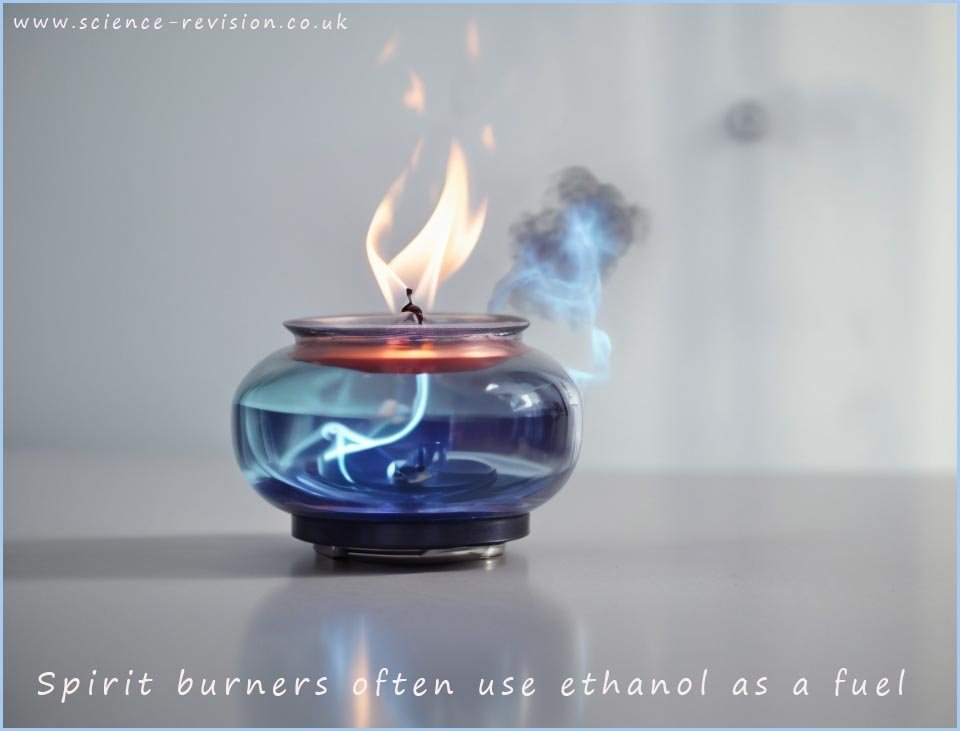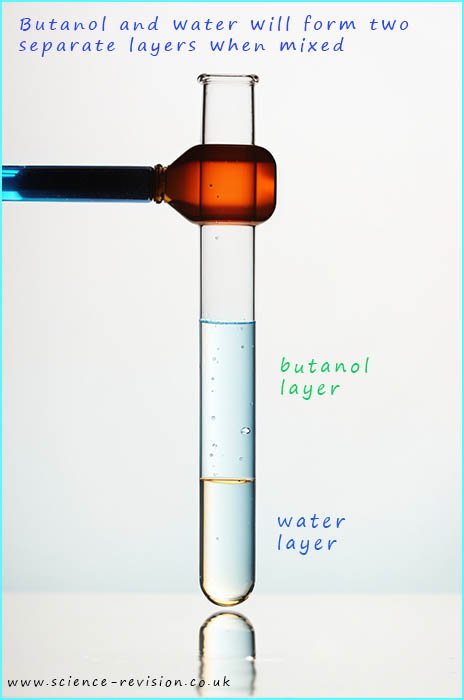

Alcohols are flammable, they make excellent fuels. Since alcohols contain on the elements carbon, hydrogen and oxygen and since combustion simply involves adding oxygen to the elements present in a compound then combustion of alcohols will release carbon dioxide and water vapour e.g.

The smaller the alcohol molecule the more volatile it will be and so it will be more flammable.

Alcohols are generally soluble in water however as the alcohol molecules get larger (chain length increases) the solubility drops. While the alcohols methanol and ethanol are all miscible in water, that is they can be mixed in any ratio without separating out into two separate phases or layers, as oil and water do, however as the chain length increases the solubility of the alcohol molecule in water begins to fall. Propanol for example will dissolve in water but butanol is barely soluble in water, if a small amount of butanol is added to water it will dissolve in the water but as more is added the butanol will begin to form its own separate layer which floats on top of the water. This is shown in the image opposite. Alcohols which do dissolve in water will form neutral solutions with a pH of 7.
The reaction of sodium with alcohols is very similar to its reaction with water. At first glance this may seem odd as alcohol and water appear to be very different. However all the parts of the alcohols circled in the image below do not take part in any of the chemical reactions of the alcohol molecules, only the -OH group, the functional group takes part in its reactions.

So if you swap all these circles groups and simply replace them with a -R label to represent them, then we have:
 With the alkyl groups on the alcohol molecules replaced by a -R group it is very easy to see how similar alcohols and water are.
With the alkyl groups on the alcohol molecules replaced by a -R group it is very easy to see how similar alcohols and water are.
Remember the reaction of sodium with water:
Well the hydroxide ion (OH-) in the sodium hydroxide is simply a water molecule (H2O), or H-OH which has lost a hydrogen, this lost hydrogen is given off as hydrogen gas during the reaction.
When sodium reacts with alcohols the same reaction occurs. The sodium removes the hydrogen attached to the hydroxyl functional group in the alcohol; the "lost hydrogen" is then given off as hydrogen gas.
As mentioned above the structure of an alcohol can be considered in some ways similar to that of a water molecule. However as the chain length of the alcohol grows then the reactions of the alcohols with sodium metal begins to slow down. Methanol ( CH3OH) is the smallest alcohol and it reacts the fastest of all alcohols with sodium. Ethanol (C2H5OH); the next alcohol reacts more slowly with sodium while propanol the next alcohol in the homologous series reacts even more slowly. This is shown in the image below where the rate of release of hydrogen gas gives an excellent indicator of the speed of the reaction taking place.
